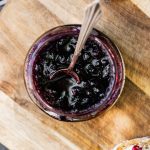Get The Most Out of Your Strawberries from Backyard Eats
Harvesting Strawberries
When It’s Ready
- Look for fully red, plump strawberries: Ripe strawberries will have a bright red color and a firm texture
- If the stem is no longer green and the fruit easily separates from it, it is ready to be harvested.
- Pick strawberries when the temperatures are cooler for better flavor and shelf life.
- Late spring to early summer, typically from May to June (or sporadically all season for ever-bearing varieties)
When It’s Too Late
- Overripe strawberries become mushy, develop mold, and may attract pests.
- Regularly check your plants to prevent overripening and ensure timely harvesting.
How To
- Use scissors or garden shears to snip the stem above the fruit, leaving a small portion attached.
- Place the harvested strawberries gently in a shallow container, taking care not to crush them.
- Avoid exposing the harvested strawberries to direct sunlight for long periods.
About Strawberries
Strawberries are groundcover plants that grow up to 0.5-1.5 ft tall. They require partial to full sun to thrive, and may require netting to help protect them from birds and squirrels.
Flowering/Fruiting Tendencies
Strawberries typically produce pink, white or red flowers and then make fruits that hang off of plants. Strawberries reproduce and spread by sending out little baby runner plants above ground which reroot and make new plants. They do not require a pollinating pair to reproduce. Ever-bearing varieties of strawberries produce fruit some all summer, making them more preferred. June-bearing varieties will fruit for a couple weeks midsummer and then not again.
Design Notes
Strawberries are typically planted in raised beds. They will take up one whole bed because they spread and “patch.” They should be covered during summer either by a permanent cage on the bed, or removable row cover, although sometimes abundance (planting more strawberries than you might usually) can work as a strategy to harvest a crop versus critters.
Care Notes
Strawberries should be fertilized every spring. After plants patch and spread it may be more practical to use granular fertilizer, rather than compost so as to not crush the plants. For mature, crowded patches, plants should be thinned out every spring or fall to at least 6 inches apart. Dead, diseased, dying or crowded plants should be removed. Some runners should be removed. Others should be left to fill in the space left by the removed plants. Keeping a healthy mix of one, two and three year old plants is essential to even and healthy fruit production. After 2 year, plants tend to start dying off.
Newly planted perennials require some additional care to help establish and support the plants as they grow. Water newly planted perennials deeply at the root 2-3 times a week during the first growing season. Apply compost and wood chip mulch in the late winter/early spring.
Storing Strawberries
Fresh Storage: Place berries in a breathable container lined with paper towels in the refrigerator for up to five days.
Long-Term Storage: Freeze the fruit in a single layer on a baking sheet. Transfer it to a freezer-safe container for up to six months.

Cooking With Strawberries
- Strawberry Shortcake: Layer fresh sliced strawberries onto sweet biscuits or sponge cake, then top with whipped cream or ice cream for a classic and delicious dessert.
- Strawberry Smoothie: Blend fresh strawberries with yogurt, milk, or a dairy-free alternative, along with a sweetener of your choice. This refreshing and nutritious smoothie is perfect for a quick breakfast or snack.
- Strawberry Salad: Combine sliced strawberries with mixed greens, toasted nuts, crumbled cheese (such as feta or goat cheese), and a light vinaigrette dressing. The strawberries add a burst of sweetness to the salad.
- Strawberry Jam: Cook fresh strawberries with sugar and lemon juice until they break down and form a thick, luscious jam. Enjoy the homemade jam on toast, pastries, or as a filling for cakes and cookies.
- Strawberry Salsa: Dice strawberries and mix them with chopped red onion, jalapeño, cilantro, lime juice, and a pinch of salt. Serve the vibrant strawberry salsa with tortilla chips or as a topping for grilled meats and seafood.
- Strawberry Sauce: Blend or puree strawberries with a bit of sugar or honey for a sweet sauce. Drizzle it over pancakes, waffles, ice cream, or desserts for a delightful finishing touch.
- Strawberry Cobbler: Layer fresh strawberries in a baking dish and top them with a sweet biscuit dough. Bake until the strawberries are bubbling and the biscuit topping is golden and cooked through. Serve warm with a scoop of vanilla ice cream.




